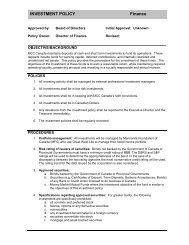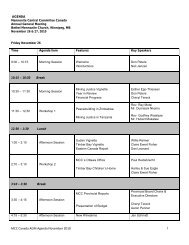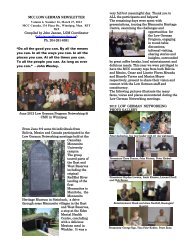Walking together: Healing and hope for Colombian refugees
Walking together: Healing and hope for Colombian refugees
Walking together: Healing and hope for Colombian refugees
You also want an ePaper? Increase the reach of your titles
YUMPU automatically turns print PDFs into web optimized ePapers that Google loves.
106 w a l k i n g t o g e t h e r<br />
GUIDELINES FOR WORKING WITH INTERPRETERS<br />
DURING<br />
SESSION<br />
DO<br />
Pay attention to your nonverbal communication,<br />
which is the only means of direct communication<br />
between you <strong>and</strong> the client.<br />
Watch <strong>for</strong> subtle signs of discom<strong>for</strong>t or distress,<br />
as a clue that the interpretation is not going well.<br />
Be aware of ethnic, age, gender <strong>and</strong> class differences<br />
between the interpreter <strong>and</strong> the client.<br />
Use short, simple statements <strong>and</strong> stick to one<br />
topic at a time.<br />
Plan what you want to say ahead of time.<br />
Regulate the pace of the interaction, pausing<br />
in natural places to permit interpretation.<br />
Check to see if messages are understood (may ask<br />
interpreter to repeat things such as instructions<br />
or directions back to you in English).<br />
Encourage the interpreter to tell you when he<br />
or she is having difficulty.<br />
Ask the interpreter to make a complete interpretation<br />
in the event of an obvious omission.<br />
Give the interpreter time to interpret concepts.<br />
One word can require a lengthy explanation in<br />
either direction if the concept doesn’t exist in the<br />
other language.<br />
DON’T<br />
Tune out or think only of your next<br />
question while the client is speaking,<br />
even though you don’t underst<strong>and</strong><br />
what’s being said.<br />
Use idioms, slang, obscure or<br />
ambiguous words, abstractions,<br />
metaphors, jargon.<br />
Keep repeating questions that aren’t<br />
being answered.<br />
Expect the interpreter to know<br />
everything about the client’s culture.<br />
Other cultural resources may be<br />
needed.<br />
AFTER<br />
SESSION<br />
Debrief on communication problems. Ask whether<br />
there was anything you did not underst<strong>and</strong> or<br />
respond to appropriately (tone of voice, nonverbal<br />
communication, etc.). Ask whether there was<br />
anything that reflected your lack of underst<strong>and</strong>ing<br />
of the client’s culture, <strong>and</strong> whether the interpreter<br />
had any difficulty interpreting (accent, dialect, client<br />
not answering the questions asked).<br />
Debrief on emotional <strong>and</strong> trauma-related issues<br />
(e.g., “Did this bring up any difficult feelings <strong>for</strong><br />
you?”) This can be done with groups of interpreters.<br />
Skip this stage. The best cross-cultural<br />
learning <strong>for</strong> both service providers<br />
<strong>and</strong> interpreters often happens<br />
through immediate feedback<br />
using specific situations as learning<br />
opportunities.<br />
Guidelines <strong>for</strong> Working with Interpreters chart courtesy of the Center <strong>for</strong> Victims of Torture, 649 Dayton Ave., St. Paul, MN 55104,<br />
www.cvt.org ©Center <strong>for</strong> Victims of Torture











